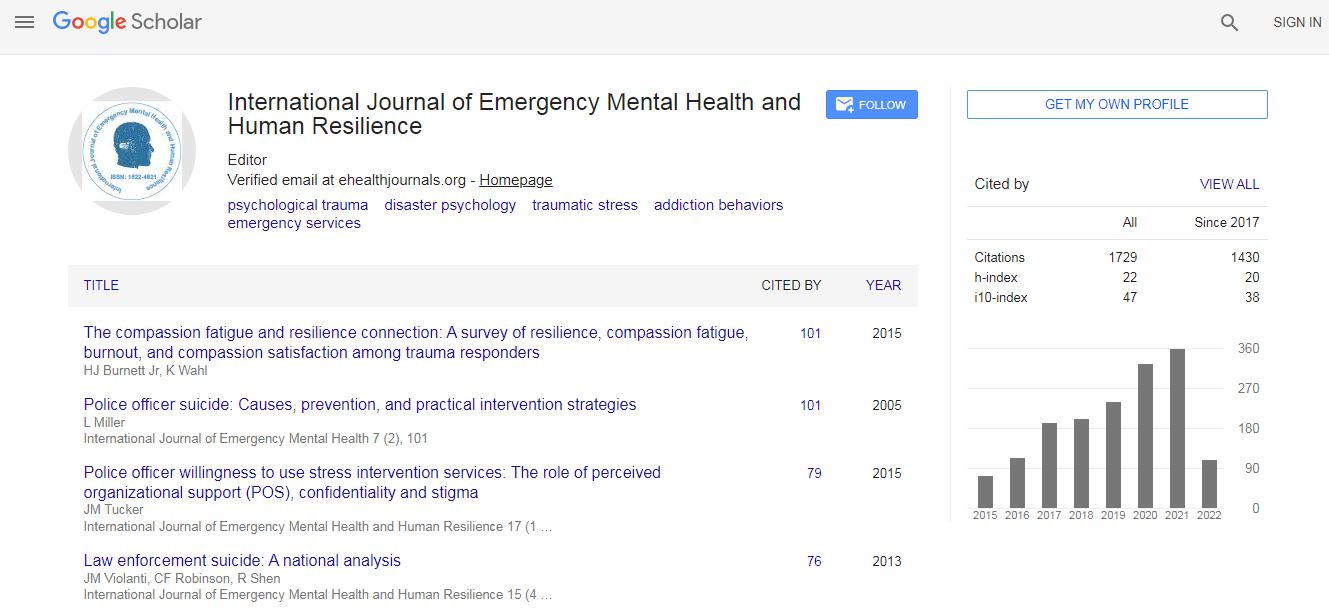Our Group organises 3000+ Global Conferenceseries Events every year across USA, Europe & Asia with support from 1000 more scientific Societies and Publishes 700+ Open Access Journals which contains over 50000 eminent personalities, reputed scientists as editorial board members.
Open Access Journals gaining more Readers and Citations
700 Journals and 15,000,000 Readers Each Journal is getting 25,000+ Readers
Google Scholar citation report
Citations : 4948
Indexed In
- Index Copernicus
- Google Scholar
- CiteFactor
- Publons
- Pubmed
- science Gate
- scispace
- world cat
Useful Links
Related Subjects
Share This Page
Negative bias to sad facial expressions in depressive symptomatology: Considering the autism spectrum
Joint Event on World Summit on Psychiatry, Mental Health Nursing and Healthcare & International Conference on Applied Psychology, Psychiatry and Mental Health
Anna Nakamura
University of Tokyo, Japan
ScientificTracks Abstracts: Int J Emerg Ment Health
Abstract
Background: Although depression as a state is qualitatively equal for both clinical major depressive disorder (MDD) and non-clinical groups, the state of non-clinical depressive symptomatology still has room for consideration. The negative bias of cognition in MDD has been intensively examined. In particular, negative bias in facial expression recognition leads to less satisfaction in the interpersonal relationship, which causes the aggregation of depression. Nakamura et al., first revealed that negative bias to sad facial expressions exists for non-clinical individuals with higher depressive symptoms. However, no research has examined the effects of the autism spectrum (AS) so far. Autism spectrum disorders involve a high risk of depression and facial expression recognition is a part of the “Theory of Mind”, which is typically inhibited in AS. The purpose of this research was to discover the effects of AS on non-clinical depression and on the negative bias to sad faces related to depression.Methods: Negative bias was measured using facial task, displaying the whole facial stimuli (happy/sad faces at 4 intensity level) and asking participants to label stimuli according to three options: happy, neutral and sad. Depression was measured by 2nd edition Beck Depression Inventory (BDI) and AS by Autism-Spectrum Quotient (AQ). Participants were 58 university students.
Findings: Although there was a significant correlation between AQ and BDI (r=0.47, p=0.003), AQ and the negative bias showed no correlation (r=0.09ns). Control of AQ, partial correlation of negative bias and BDI were significant (r=0.36, p=0.03), which indicates that AS does not affect negative bias in depressive symptomatology.
Conclusion: This experiment first considered AS’s effects on negative bias in non-clinical depression and showed that the negative bias toward sad faces is independently due to depression. The findings can contribute to the understanding of nonclinical depression and its prevention.
Biography
Anna Nakamura is a clinical psychologist and a PhD researcher in Japan. As a practitioner, she has been mainly working with cognitive and behavioral therapy to conditions such as depression and obsession. Through her clinical experience in hospitals and with education, her passion for improving mental health has increased and she learned the current status and issues in various clinical fields. As a researcher, she has a background of experimental psychology on perception and cognition. She has the ability to infer how the world is looked and felt by people that enables her to look from the depressed patient’s point of view. Her clinical and academic skills are advancing interactively, which makes her a unique expert in depression.
E-mail: annnnnakamaura@gmail.com

 Spanish
Spanish  Chinese
Chinese  Russian
Russian  German
German  French
French  Japanese
Japanese  Portuguese
Portuguese  Hindi
Hindi 